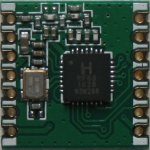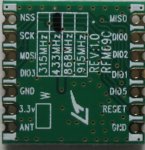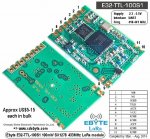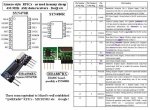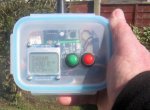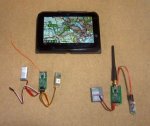Hi,
I am trying to program RFM69 (SX1276) modules in BASIC. (I'm actually trying to program PICs to control these modules)
I have attached photos of top and bottom. They show RFM69 chips, but when I enquired about programming instructions etc, they told me that the chips are actually sx1276.
I hope to use these chips/modules for monitoring wildlife and triggering cameras, perhaps balloon tracking also following my radio control models, by receiving GPS.
I want firstly to have the simplest transmission set-up, which I could monitor with an SDRadio. Then learn how to send and receive, and 'handshake?'
I am however slightly handicapped by only being able to 'speak' BASIC (OSHONSOFT), this is why I've joined your forum, as there is quite a bit of code written in C, but I have difficulty reading it.
I have read threads on this site written by SRNET and STUART ROBINSON that look interesting, and for other chips, and I think I could translate one of the programs, if I was pointed at the best minimum one, or help in writing a new one, if anyone would like to help me, please.
EDIT: See correction above
Cheers, Camerart.
I am trying to program RFM69 (SX1276) modules in BASIC. (I'm actually trying to program PICs to control these modules)
I have attached photos of top and bottom. They show RFM69 chips, but when I enquired about programming instructions etc, they told me that the chips are actually sx1276.
I hope to use these chips/modules for monitoring wildlife and triggering cameras, perhaps balloon tracking also following my radio control models, by receiving GPS.
I want firstly to have the simplest transmission set-up, which I could monitor with an SDRadio. Then learn how to send and receive, and 'handshake?'
I am however slightly handicapped by only being able to 'speak' BASIC (OSHONSOFT), this is why I've joined your forum, as there is quite a bit of code written in C, but I have difficulty reading it.
I have read threads on this site written by SRNET and STUART ROBINSON that look interesting, and for other chips, and I think I could translate one of the programs, if I was pointed at the best minimum one, or help in writing a new one, if anyone would like to help me, please.
EDIT: See correction above
Cheers, Camerart.
Attachments
-
191.1 KB Views: 23
-
188.4 KB Views: 21
Last edited:

